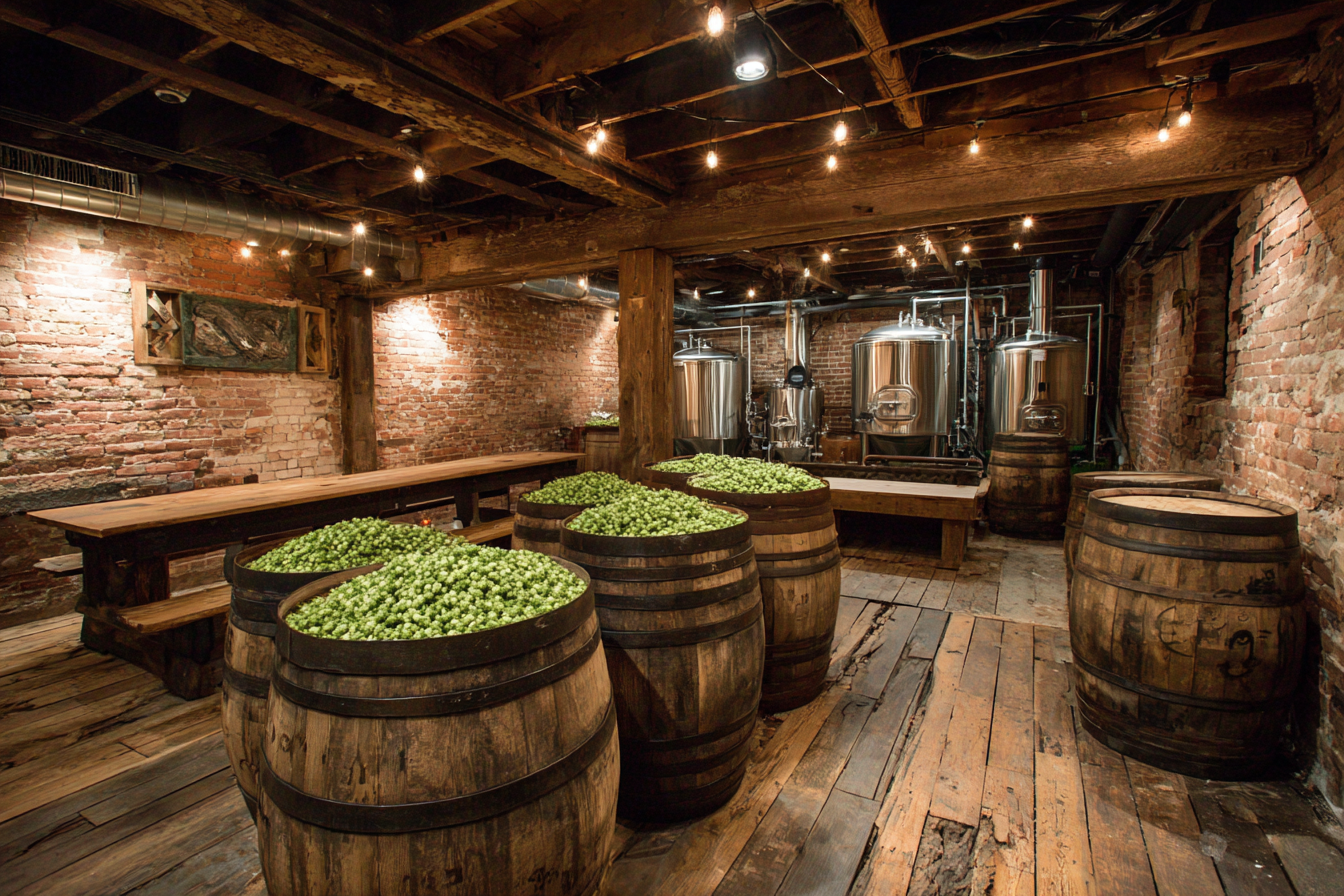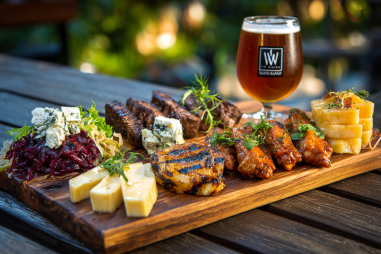American wild beer brewing has carved out a vibrant niche in the craft beer world by embracing unconventional yeast and bacteria strains, allowing nature to lend its unique flavors and aromas to the brewing process. The adventurous spirit of these brewers leads to beers that are unpredictable, complex, and deeply satisfying. Whether you’re an established brewer looking to experiment or a newcomer eager to explore, mastering American wild beer brewing techniques offers a rewarding challenge that celebrates creativity and patience.
Getting to Know American Wild Beer
Wild beers from America stand apart due to their distinctive fermentation processes and flavor profiles. Unlike traditional beers, which rely on cultivated strains of Saccharomyces yeast for a predictable and clean fermentation, American wild beers incorporate wild yeasts, bacteria, and spontaneous fermentation techniques. This approach often results in brews that exhibit sour, funky, tart, and earthy characteristics, inspired by the natural microbial environment of the region.
Many American craft brewers draw inspiration from traditional European wild beer styles like Belgian Lambics and Flanders Reds but put their own spin on them by incorporating native wild yeasts and experimenting with various aging methods and ingredients unique to the local terroir.
Wild Yeast and Bacteria: The Heart of Wild Beer
The mystery and charm of wild beer largely hinge on the complex microorganisms that drive fermentation. Here are the key microbial players:
- Brettanomyces: Often shortened to “Brett,” this wild yeast imparts earthy, funky, and sometimes fruity aromas. It ferments sugars that traditional yeast cannot, contributing to the beer’s complexity over extended aging.
- Lactobacillus: This bacteria produces lactic acid, delivering the sour and tart qualities prized in many wild beers.
- Pediococcus: Another lactic acid-producing bacterium that adds depth to the sourness, sometimes contributing a creamy mouthfeel.
- Saccharomyces cerevisiae: While typically the ‘standard’ brewer’s yeast, in wild brewing it often works alongside wild strains or in staged fermentations.
American wild brewers often capture native yeasts and bacteria from their environment or use commercial blends specially designed to mimic wild fermentations. Understanding the behavior of each microbe helps in managing fermentation outcomes and flavor development.
Spontaneous Fermentation Versus Controlled Wild Fermentation
There are two primary approaches to introducing wild elements into your beer:
Spontaneous Fermentation
This traditional method involves exposing cooled wort directly to the open air where wild yeasts and bacteria naturally occur. In some breweries, wort is transferred to shallow vessels or coolships and left overnight or longer to capture microorganisms indigenous to the environment. This approach is highly unpredictable but can produce incredibly complex, terroir-driven beers.
Pros:
- Authentic, one-of-a-kind flavor profiles
- Connects the beer deeply to the local environment
Cons:
- Uncertain outcomes, high risk of contamination
- Longer fermentation and aging times
Controlled Wild Fermentation
Here, brewers inoculate wort with carefully selected wild yeast and bacteria strains or mixed cultures in controlled quantities. This method provides more predictability while preserving the complexity of wild fermentation. Often, brewers use multi-stage fermentation, starting with standard yeast and then introducing Brettanomyces and bacteria for a secondary fermentation.
Pros:
- Greater control over flavor development
- Reduced risk of unwanted off-flavors
Cons:
- May lack the unique unpredictability of spontaneous beers
Equipment and Environment Considerations
Wild beer brewing demands specific considerations when it comes to your brewery setup and environment:
- Sanitation vs. Microbial Presence: Unlike traditional brewing where cleanliness is paramount to avoid contamination, wild brewing requires a balance. You want to allow desired wild microbes to thrive but keep unwanted pathogens at bay.
- Adequate Fermentation Vessels: Open fermenters or shallow coolships encourage spontaneous fermentation. Many American breweries adapting this method use specialized vessels or modified stainless steel fermenters to replicate this process while maintaining sanitary conditions.
- Dedicated Wild Beer Equipment: To minimize cross-contamination, it’s wise to designate specific equipment, like pumps, hoses, and barrels, exclusively for wild beer production.
- Barrel Considerations: Oxygen exposure and resident microbes in barrels play a critical role in developing flavor. Using barrels previously holding wine, bourbon, or other beer styles can contribute desirable complexity.
Step-by-Step Brewing Process for American Wild Beer
While wild beers vary immensely in process, here’s a general overview highlighting key steps to craft your own wild beer:
- Prepare the Wort: Brew a traditional wort with malted grains. Avoid high hop bitterness early on, as hops inhibit wild microbes. Many wild beers use low hopping rates or add hops later to preserve microbial activity.
- Cool and Inoculate: Cool wort to fermentation temperature. For spontaneous beer, transfer to open vessels to capture wild microbes. For controlled wild fermentation, pitch your chosen blend of yeasts and bacteria.
- Primary Fermentation: Allow fermentation to begin, monitoring gravity and pH changes. Wild fermentations progress slower and can last weeks or months.
- Transfer and Aging: Move beer to barrels or secondary vessels for extended aging and flavor development.
- Periodic Tasting and Blending: Monitor the evolving character, and if desired, blend multiple batches or barrels to balance flavors.
- Packaging: Bottle or keg once desired maturity is reached, taking care to control carbonation levels, which may continue evolving.
Aging and Barrel Maturation Techniques
The magic of wild beer often happens during months or years of aging. Barrel maturation serves multiple purposes:
- Microbial Ecosystem: Barrels are rich in resident yeasts and bacteria that continue to work on the beer, producing complexity.
- Oxidation: Controlled oxygen exposure softens flavors and adds nuanced characteristics.
- Integration: Blending the beer with previous vintages or other barrel-aged batches helps balance acidity, funk, and aroma.
American brewers experiment with various woods like oak and depending on the previous barrel contents — wine, whiskey, or beer — to impart distinctive flavors. Temperature and humidity control during aging also influence the final result.
Managing Flavors and Avoiding Off-Notes
While wild beers thrive on complexity, certain unsavory off-notes can detract from the beer’s appeal. Here are some tips to maintain a delicious profile:
- Sanitary Practices: Keep your equipment clean but don’t sterilize the environment to death. Balance is key.
- Control Oxygen Exposure: Too much oxygen can cause excessive oxidation, leading to unpleasant cardboard or sherry-like flavors.
- Monitor pH and Acidity: Excessive acidity can make a beer overly sour or vinegar-like. Regular tasting helps you track progress.
- Temperature Management: Maintain appropriate temperatures for your chosen microbes. Extreme heat favors unwanted bacteria;
- Blending: If one batch develops undesirable notes, blending with other beers can create harmony and salvage the overall product.
Common Challenges and How to Solve Them
Brewing wild beers is a rewarding but complex journey that comes with some common obstacles:
- Unpredictable Fermentation: Wild microbes don’t always behave as expected. Patience and experience help, as does documenting batches thoroughly.
- Contamination Risk: Always segregate wild beer equipment and spaces to prevent unwanted cross-contamination with non-wild beers.
- Long Aging Times: Wild beers often take months or years to mature. Plan your brewery capacity and cash flow accordingly.
- Flavor Balance: Getting the right level of funk, sourness, and fruitiness takes trial and error. Keeping detailed notes and running small test batches aids refinement.
Embracing Creativity in American Wild Beer Brewing
American wild beer brewing is as much an art as a science. The techniques blend tradition with innovation, inviting brewers to explore the unexpected and push flavor boundaries. With wild yeast cultivation, spontaneous methods, diverse aging techniques, and environmental influences, each batch has the potential to tell a unique story.
As you hone your wild brewing skills, stay curious, keep meticulous records, and never shy away from experimentation. The wild beer community thrives on sharing knowledge and discoveries, making this craft a rewarding adventure for both the brewer and the drinker. Cheers to embracing the wild side of brewing!







